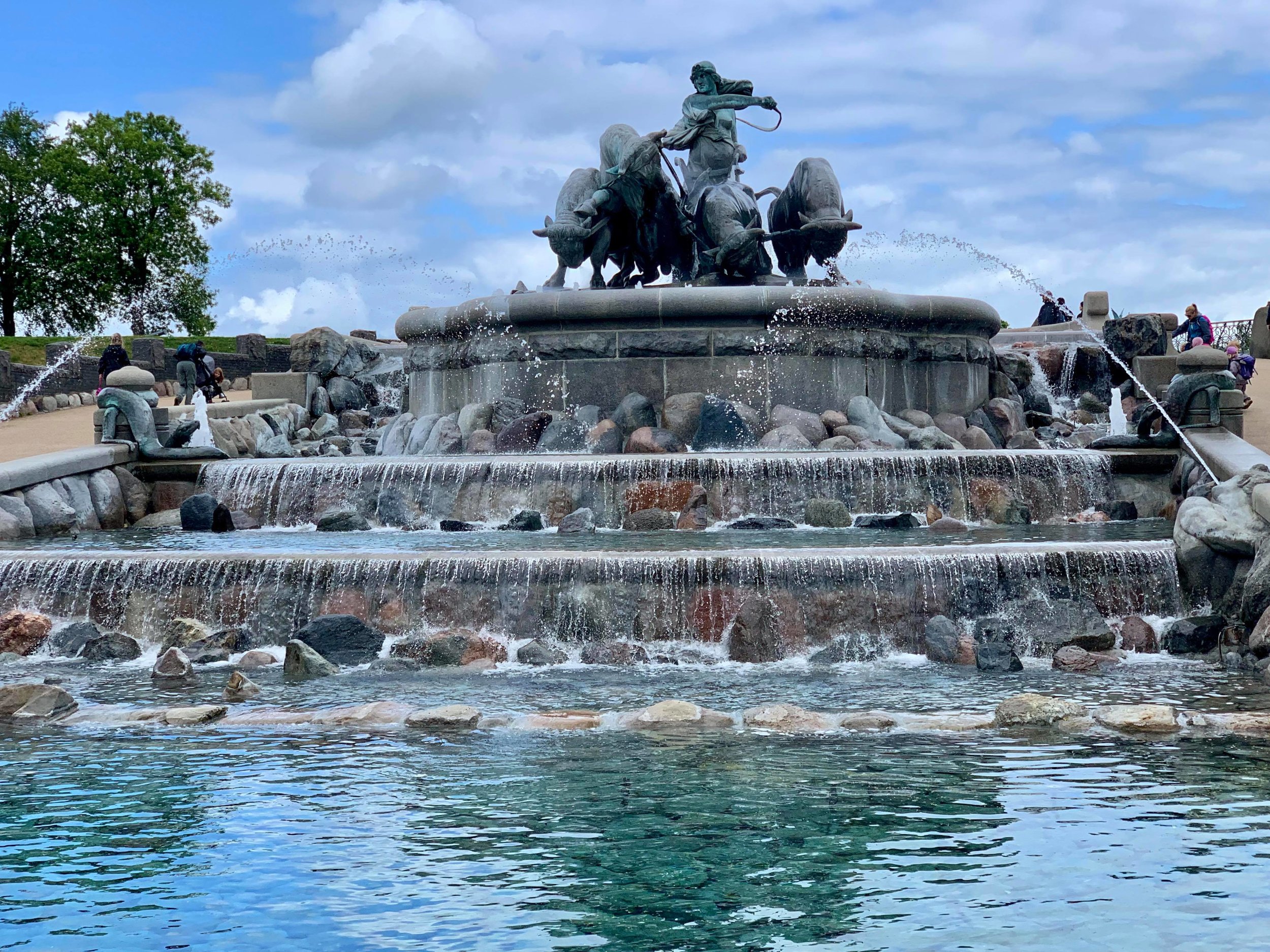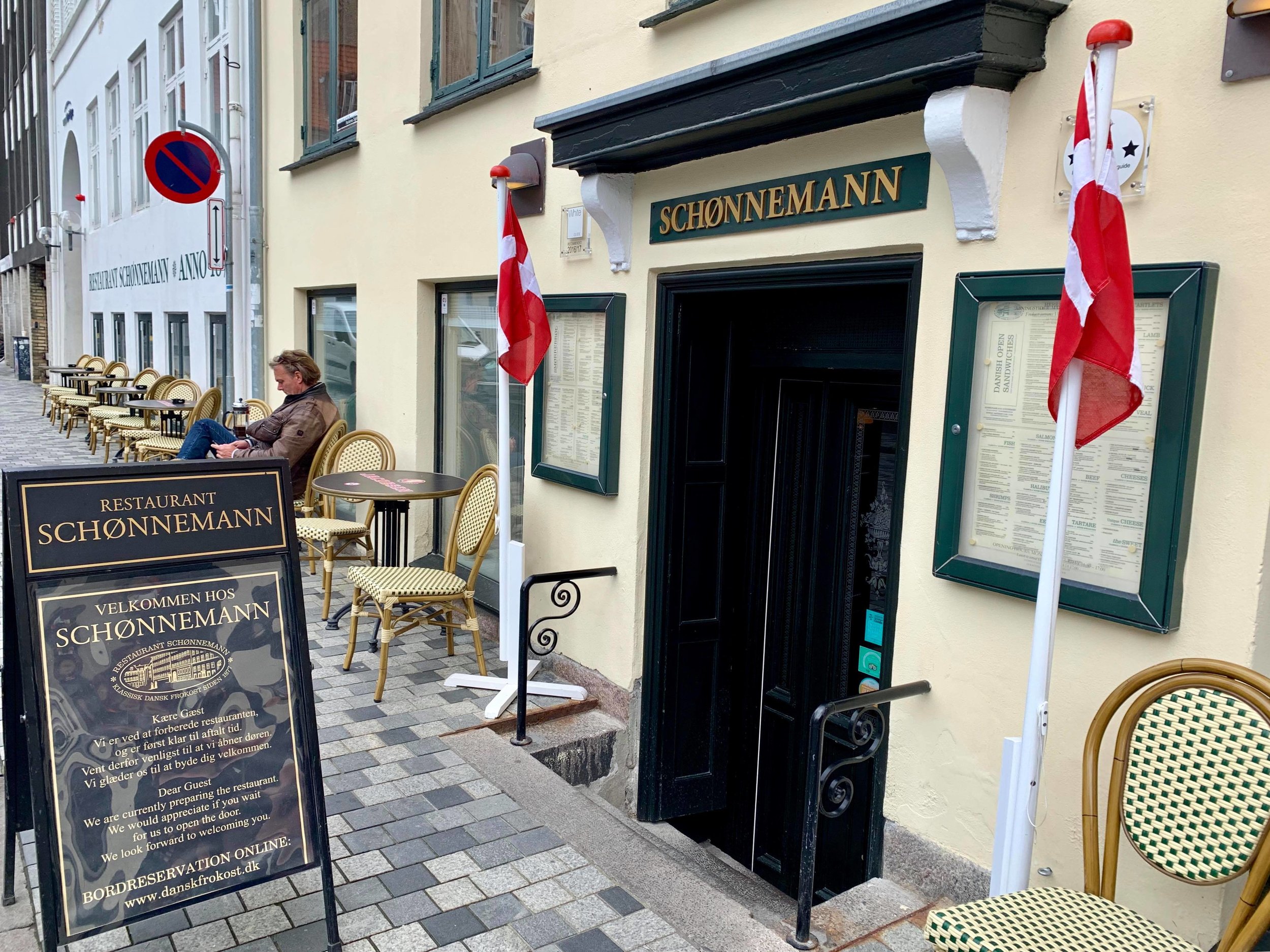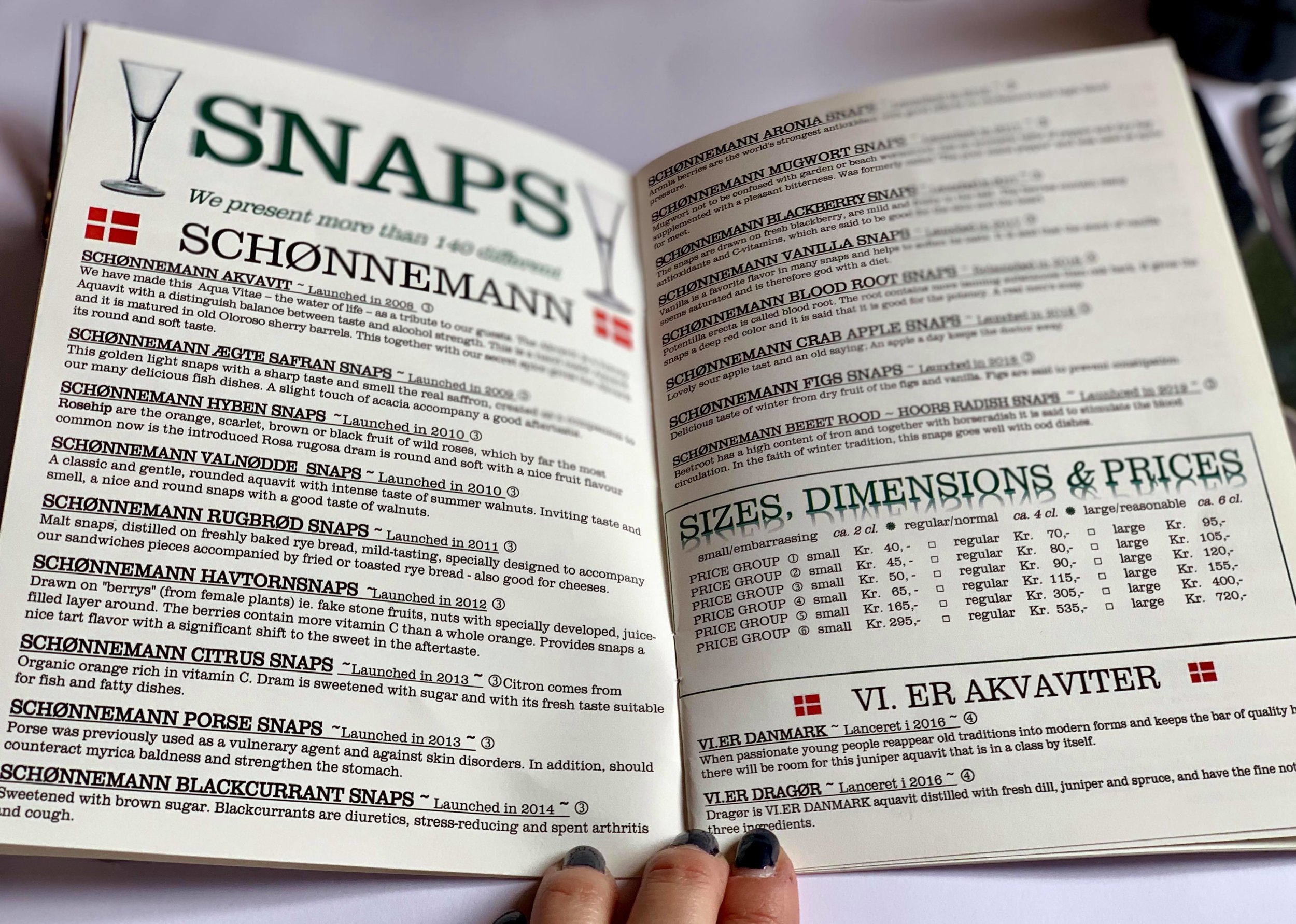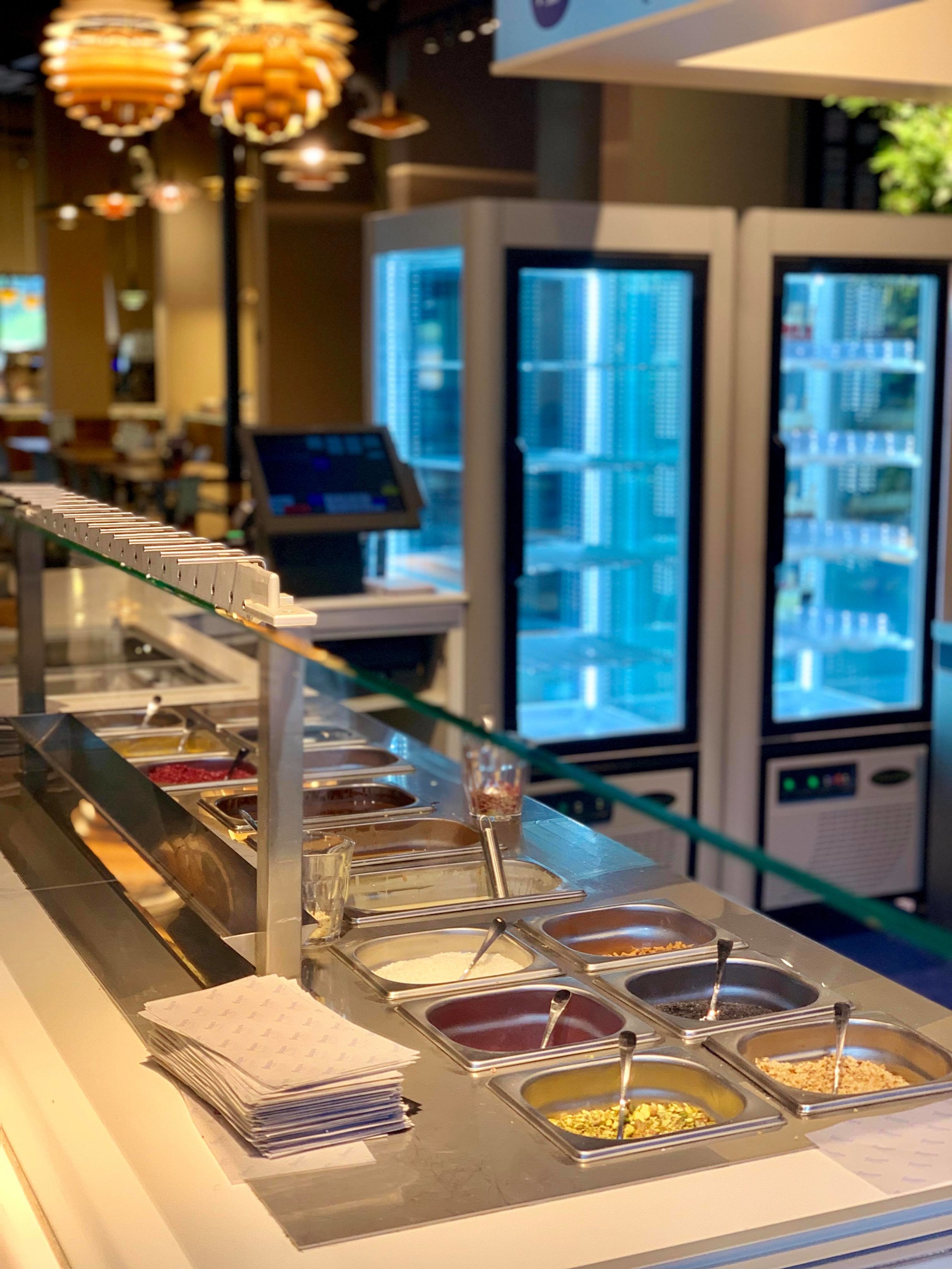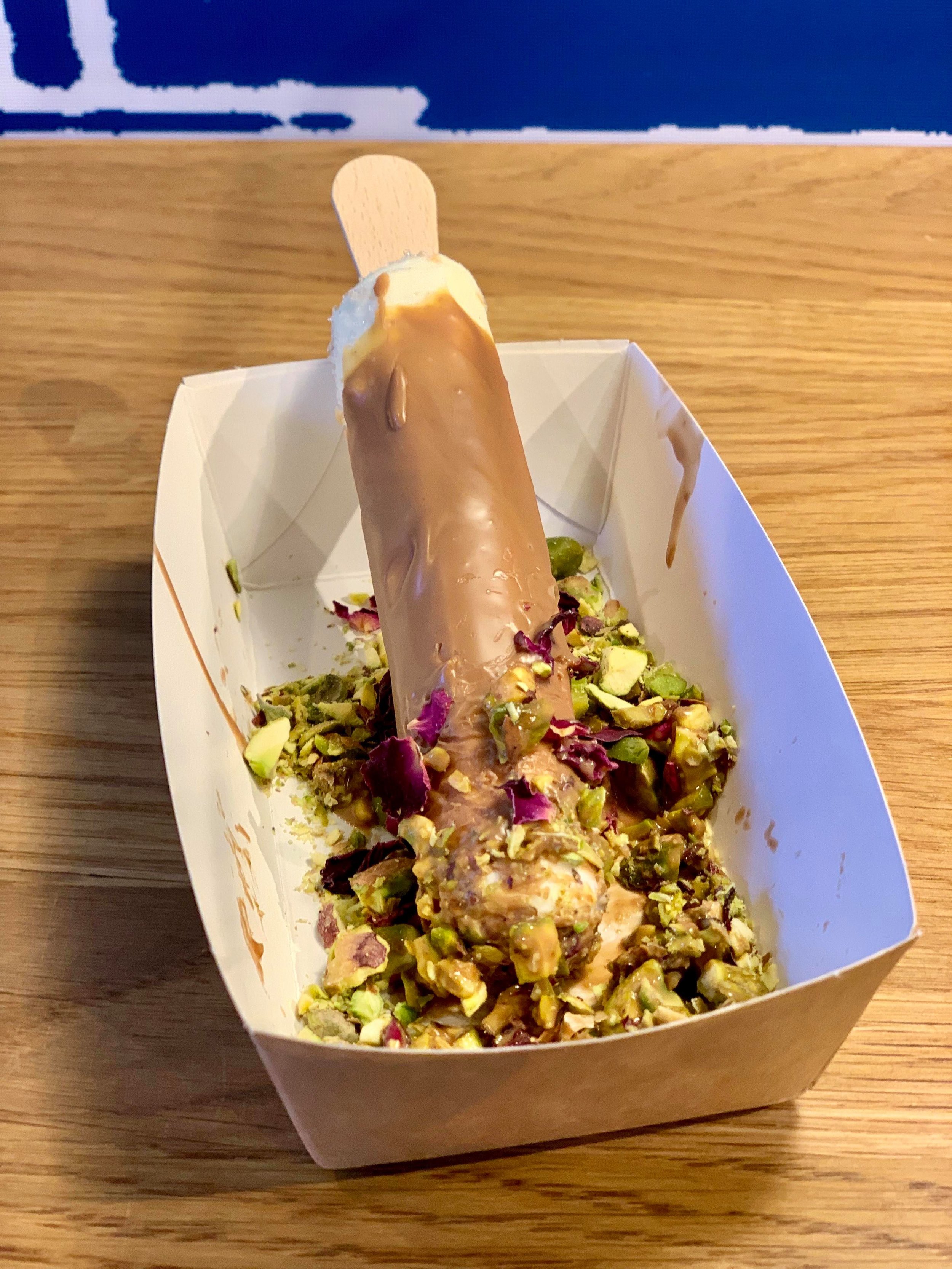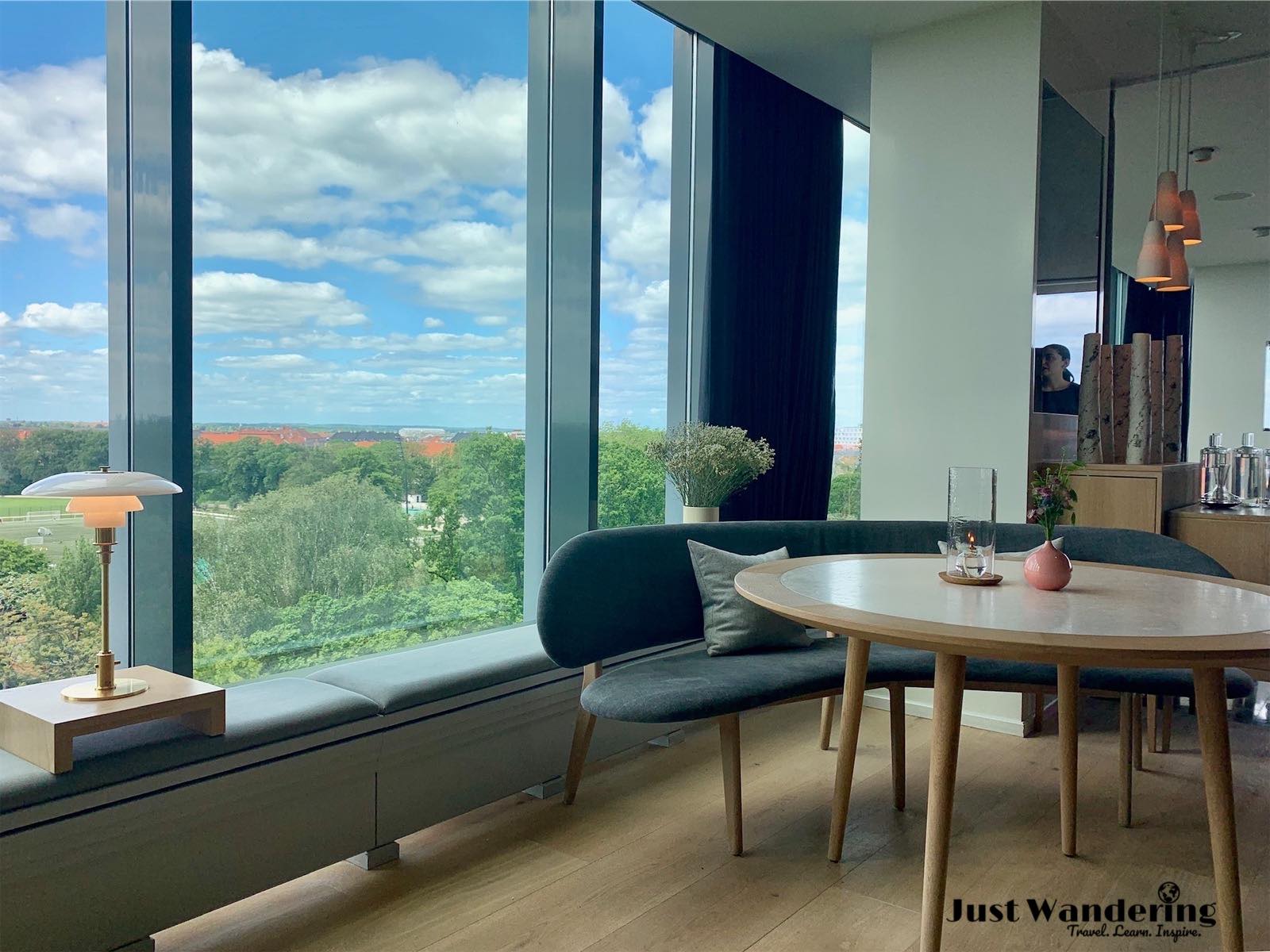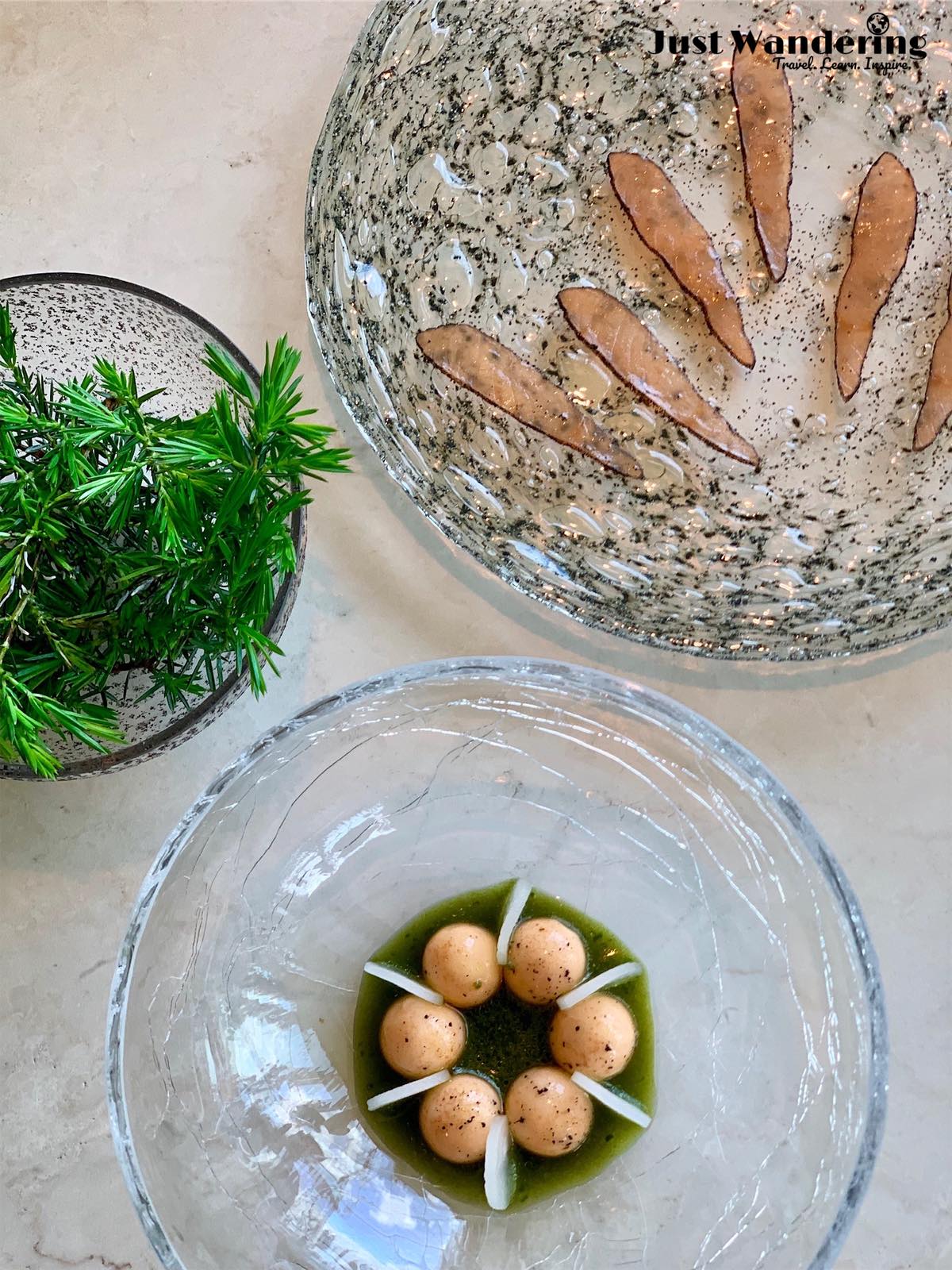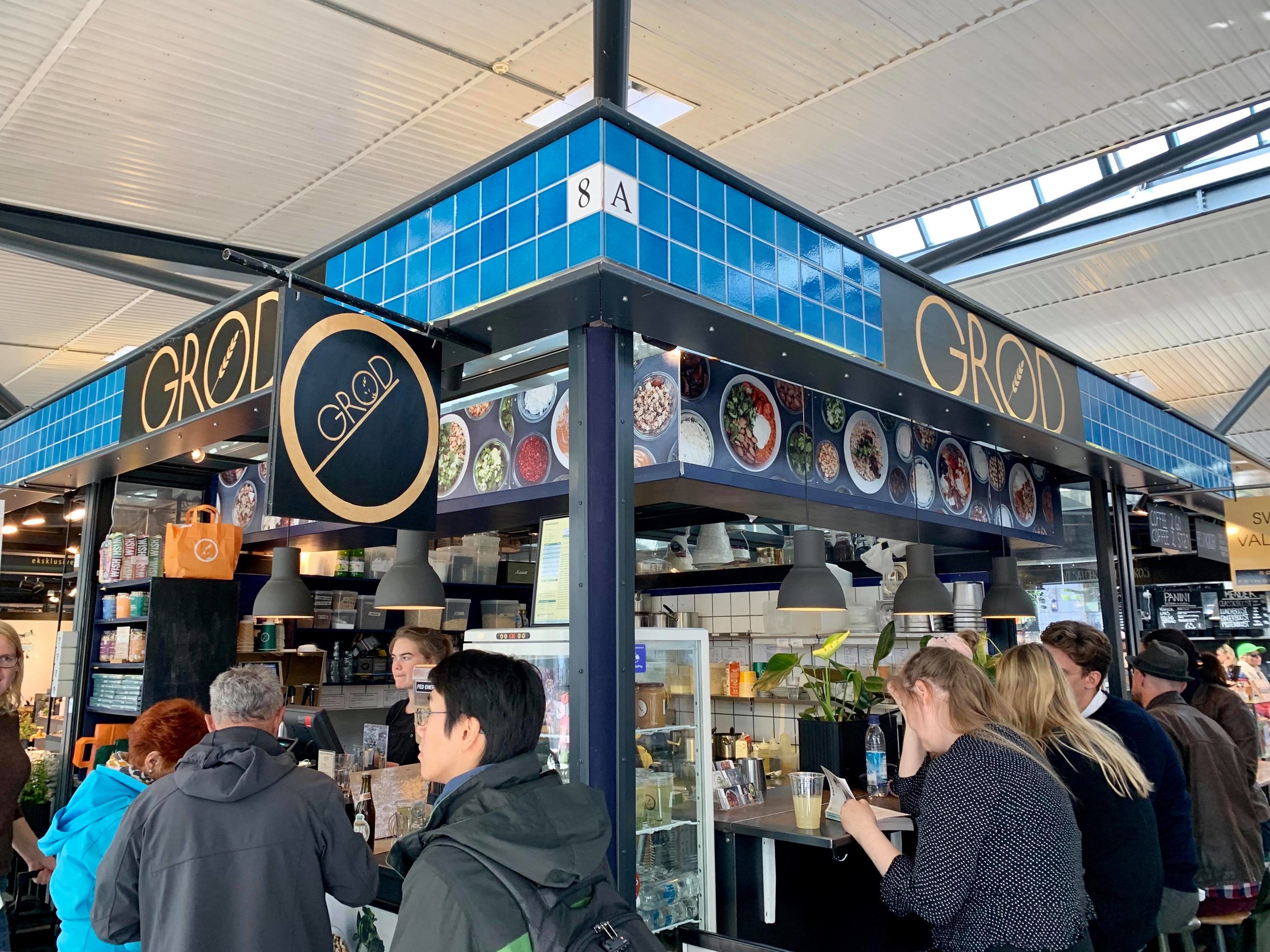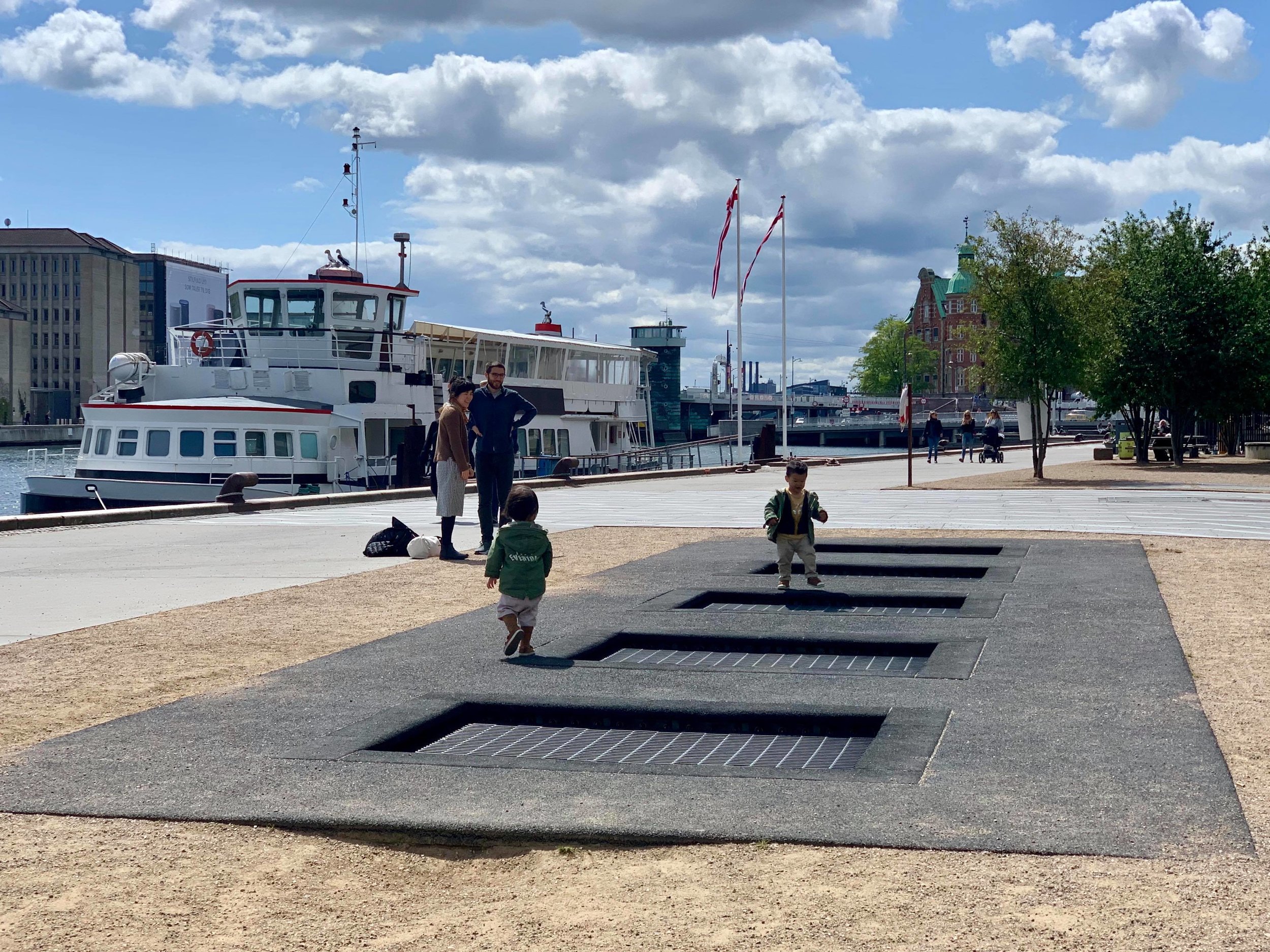Originally drawn to the city as the hometown to the internationally acclaimed Noma, I quickly discovered in my nearly three days here so, so much more. In addition to an incredible food scene, Copenhagen is known for consistently ranking first among cities around the world for livability. And though I did not get the opportunity to dine at Noma during my time here, every meal I had here, Michelin-rated or not, expensive or otherwise, was truly amazing.
Day 1: The Mermaid - langelinie - Nyhavn - Restaurant Schonnemann
Arriving via a morning flight from Stockholm, we opted for a walk along the water to our lunch reservation at Restaurant Schonneman, passing by the famed Mermaid statue and Nyhavn along the way.
The bronze statue was finished in 1913 by Edvard Eriksen and has since become synonymous with Copenhagen. It was commissioned for the city by Carl Jacobsen, founder of famed Carlsberg beer. The brewery is also situated in the city, although unfortunately closed for renovation during our stint there.
The statue itself is situated in a park and seaside promenade known as Langelinie. A picturesque location to admire the Copenhagen harbor and walk or bike along the water. Continuing on the path along the Copenhagen Harbor we came across the famed St. Alban’s Church, an Anglican church in the city completed in 1887.
Another of Jacobsen’s donations to the city, the Gefion Fountain, stands in front of the Church. It was donated on the occasion of Carlsberg’s 50th anniversary, and depicts the Norse goddess Gefjon..
Nyhavn…
…originally a commercial port where incoming boats used to dock in the city, today the colorful houses that line the port have become iconic and the area is a main tourist thoroughfare for anyone visiting the city.
Canal tours depart by the hours from the docks along the river, and restaurants and bars attract locals and visitors alike with views of the water.
Interesting fact: Hans Christian Andersen, celebrated author of countless children’s fairytales, lived throughout his life in various houses in Nyhavn.
Restaurant Schonnemann is a must in Copenhagen. Only open for lunch, this historic establishment specializes in Danish smørrebrød (open faced sandwiches). Be sure to make a prior reservation (online here) for one of the three seatings they offer everyday for lunch, as walk-ins are very rarely able to be seated.
Below is a selection of smørrebrød we sampled, all descriptions from the Restaurant Schonnemann menu.
With hundreds of smørrebrød to chose from, no doubt you’ll discover your own favorite.
Eggs & shrimps
– eggs, freshly peeled Greenland shrimps and mayonnaise
Smoked eel
– with scrambled egg and chives
Renes favorite
smoked Greenland halibut with cucumber a la creme; servered on caraway bread
Veal liver pate
– with mushrooms, fried bacon pickled red beet and cucumber salad
Roastbeef
with remoulade, grated horseradish, cucumber salad and crispy onions
Beuf tartare
– slightly roasted tartare of beef served with grated horseradish, raw egg yolk, fried capers and rye bread
Mr. Schønnemann
– boiled salted duck breast with apple/root beet salad, horseradish and chives
No lunch on vacation is really complete, of course, without an afternoon drink. ‘Snaps,’ also known as aquavit or ‘water of life,’ is liquor commonly found throughout Scandinavia.
According to locals, no meal of smørrebrød is truly complete unless accompanied by a few glasses of these spirits. Restaurant Schonnemann, naturally, offers a selection just as far ranging as their smørrebrød selection.
Just, by the way, a small selection of the Schonnemann’s snaps/drinks menu. All in all a must-try for the city. Again, keep in mind they’re only open for lunch, and make sure to arrive on time for your reservation! We came slightly early and was told we couldn’t be seated until the next seating began at 2:15PM. They are open Mon-Sat with 3 seatings each day: at 11:30AM, 1PM, and 2:15PM.
Day 2 - the cisterns, tivoli gardens, geranium restaurant
The Cisterns in Copenhagen is a historical underground water reservoir for the city, now turned into an exhibition and performing arts space. As the reservoir became defunct, the city built a park atop the space (now known as Søndermarken Park), which stands across from Frederiksberg Castle.
Entrance to the Cisterns
When we came here in May of 2019, the artists Superflex turned the space into the exhibit ‘Its not the end of the world.’
Upon entering the cisterns, rainboots are provided for visitors (so don’t forget your socks!), as the artists have purposefully flooded the space for the exhibition. Not to worry, however, as it is only shallow water that has partially submerged parts of the cisterns…
“A flood has occurred, decay has begun, and the visitor will encounter relics that seem to come from a distant past: our own present. In the cave-like and different climate of Cisterns, the visitor will take in the exhibition not only with the eyes and mind but with the entire body. ”
Cold, dark, massive…
a few words that come to mind when wandering around the cisterns. Completed in 1859 and forgotten for centuries, these subterranean chambers reminded me of the catacombs one finds under churches.
The exhibition featured at the time of our visit was created by artist group SUPERFLEX.
Seen to the right a peek into one of the shelter like rooms set up in the midst of the cisterns by the artists, through which viewers can take a peek into what bathrooms at the U.N. will presumably look like after we have destroyed the climate and at the end of days.
From the official website:
”As an exact copy of the executive toilets of the Bonn headquarters of the United Nations Framework Convention on Climate Change (UNFCCC), it appears as a portrait of human consumption and our global struggle to counteract the damage this has inflicted.”
“With this exhibition, SUPERFLEX turns the dystopian scenario of the end of humanity into a more multifaceted narrative. As the title claims, the artist group suggests that the changes might be the end of humanity but not necessarily the end of the world.”
For more about the artists SUPERFLEX and the Cisterns please see here.
TIVOLI GARDENS
One of the oldest functional amusement parks and pleasure gardens in the world, Tivoli has been open since August 15, 1843
Constructed in 1974, the Peacock Theater, seen below, is the oldest structure in the gardens. The four Chinese characters in the plaque at the top translate to ‘shared joy with the people,’ to describe the spirit of the garden itself.
The palace seen below is known as Nimb, named after the family who were the original tenants within that building (a restaurant). Today it is a hotel and several restaurants.
The grounds on which the beautiful Tivoli Gardens were built were originally military grounds, leased from the city by the gardens.
Today, however, the grounds are owned by Tivoli
Did you know? Hans Christian Andersen was so struck by the beauty of the gardens when he visited upon its opening that he was inspired to write the fairy-tale the Nightingale.
Food options in the garden abound. Like most amusement park, Tivoli offers various snacks (and drinks of the adult variety) at various stands and outlets within the park, restaurants dot the various pathways of the garden, and finally there is a large food hall near the main gate.
No trip to the amusement park is complete without ice-cream…
Danish hot dogs…
Something I hadn’t known prior to coming, apparently the Danes are crazy about hot dogs and stands, known as pølsevogn, are commonly found on every street corner.
Seen to the right a ‘French’ hot dog, complete a baguette bun and a sausage tucked into the middle for good measure.
Be sure to try a ristet dog, most resembling of a typical hot dog but topped with pickles, crispy fried onions, sweet spices, and more delicious goodness.
The Alley opened in Tivoli in 1952, meant to be reminiscent of a Danish market town. Shops line either side of the main thoroughfare, with the roller coaster mountain seen to the left.
A stray peacock
encountered during our scroll within the park.
At night-time…
the gardens lights up and transform into a different world. Time permitting, definitely stay past sunset and enjoy the gardens until its closing time of 11PM!
If there is one ride among the many offered in the amusement park, the roller coaster in this section of the park, barely seen in the background below, is a must. Try the coaster with VR, an experience so immersive and realistic it trumps any other coaster I’ve been on thus far in my life.
One of the most popular places in the city for tourists and locals alike, Tivoli was a highlight of our time in Copenhagen, where if I may admit, I enjoyed the rides in perhaps a little too much for some one no longer in their teens.
Geranium
Last but not least for the day, a few snapshots from Restaurant Geranium, the only three-Michelin star eatery in Copenhagen, making it, yes, one star above Noma per Michelin standards.
With Chef Rasmus Kofoed cooking and supervising in the open kitchen and personally serving a handful of the courses, taste, quality, and presentation are as you’d expect. Winner of the most amount of medals in the history of the Bocuse D'ore-competition (triple winner of the gold, silver, and bronze medals), my meal here was the closest I’d ever come to eating art. If Picassos (Picassoes?) were edible, I’d expect it to come out of the kitchens of Geranium.
Four small plates of amuse-bouche to start:
Followed by the main courses:
And finally, four courses of dessert:
The meal sadly comes to an end with coffee and a few final bites of chocolate.
Day 3 - Sidewalk trampolines, church of our SAVIOR, freetown christiana, Torvehallerne Food Hall
Havnegade is a water-front promenade along the river in Central Copenhagen.
A lovely installation of a set of give trampolines can be found along the promenade, near the modernist building of the Bank of Denmark across the waterway. No wonder Copenhagen is consistently ranked one of the most livable cities on Earth!
Bikes…
are huge in Copenhagen, as in most Scandinavian cities, I suspect. Renting one and biking along the many bike lanes found on pretty much every street = great way to explore the city.
Continuing along the promenade onto the other side of the water, we wandered into the neighborhood of Christianshavn
Church of Our Savior
is baroque church standing in the city since 1695 whose unique tower, famous for its helix spire with an external winding staircase that can be climbed to the top, can be seen from much of the city.
The tower can be climbed via the winding staircase within and eventually, outside, after the purchase of a ticket.
400 steps
await visitors who choose to embark on the journey to the top of the spire. Beware as there are parts of the climb that can be unforgiving, often featuring narrow and steep stairways of wood
If you have a fear of heights
as the last part of the climb requires you to go up a winding staircase several hundred feet/meters above the city, offering fantastic panoramic views but potentially daunting for those who don’t do well with heights
Seen in the distance, central Copenhagen
Freedown Christiana, perhaps one of the largest and most centrally located communes whose residents consider themselves, at least in theory, independent from the laws that govern the rest of Copenhagen and Denmark.
A warning on photography in the district, you’ll see signs on many buildings that prohibit photographs. Because the products on display at the roadsides exist in a legal grey zone under Danish law, residents are very protective of their privacy. It is highly advised not to take pictures of people. Past this point seen below, residents will stop you from taking photos and ask you to delete any pre-existing pictures taken that might put locals in jeopardy.
I included a few snapshots here but you’ll see that photographic documentation of my walk around this area is uncharacteristically sparse.
Founded in 1971, the area occupied by residents was formerly part of military barracks that were subsequently abandoned, and the history of Christiana, as can be expected of any anarchist settlement, is one of strife and only recently tenuous peace with the city of Copenhagen.
Today the area has become a incubator for artists and hippies alike, and while certain legal or illegal herbs are heavily trafficked in the area, the grounds are also a hotbed of creativity and individual expression.
A community of about 850 to 1,000 residents, it is hard to find the precise noun to characterize the settlement. Terms range from ‘intentional settlement’ to ‘anarchist commune.’ One supposes it is difficult to capture the essence of such a free-spirited space with conventional words.
Seen below from one of the gates leading out from Christiana, residents within the space do not consider themselves part of EU, or indeed subject in theory to Danish law.
Torvehallerne Market Hall
Perhaps one of the most well-known market / food halls in Copenhagen, Torvehallerne consists of two large glass buildings on the grounds of Israels Plads. As a visitor to the city, it would be remiss not to stop by for a meal and a quick jaunt here.
Since its completion in 2011, Torvehallerne features over sixty food vendors and is also frequented by locals for fresh produce, flowers, and more.
The stalls at the market hall abound with gastronomic delights. Though not necessarily of the Nordic variety, I found this specialty olive oil store of interest, and marveled briefly at the many tinctures of oils they had on display.
GRØD opened in Copenhagen back in 2011 dedicated exclusively to a Danish breakfast staple: the porridge. Today the eatery has three locations throughout the city, one of which is here, and offers sweet and savory selections of the Danish porridge.
A complete breakfast indeed…
coffee along with an order of GRØD’s ‘All In’ porridge, which features oat porridge and all toppings on offer, aka:
Apple compote, rhubarb compote, caramel sauce, peanut butter, Skyr icelandic yogurt, almonds, hazelnuts, GRØD granola, coconut flakes, cocoa nibs, Valrhona chocolate drops, freeze dried raspberries, bananas, fresh apple, and strawberries.
Two stalls down from GRØD, be sure to stop by and order a sampling of the blinis on offer at MULGEO BLINIS. A relative newcomer to the Copenhagen food scene, these blinis were some of the best I’d ever had, not to mention the most interesting. Previously, all I’d known about blinis was as a sidekick to caviar. Featured here on their own, these blinis were out of this world good.
From left to right, celeriac & cornflower (with roasted buckwheat & sunflower seeds), salmon & horseradish (with trout roe and brown butter), garlic fried mushroom & daikon (with rock chives & kale powder)
Restaurant Barr
I’ll end this page highlighting one more restaurant we ate at during our time in Copenhagen. Not only was the food at Restaurant Barr phenomenal, I also had the chance to fangirl over Rene Redzepi’s appearance at the restaurant. Tucked discreetly at one end of the space with his friends, Rene was apparently also a fan of Barr. Not sure anyone else’s endorsement really matters, do you?
TO START
Fried shrimp, pea dip, prosecco
BROWN CRAB
Grilled Belgian waffle. Yoghurt and green strawberries
SCHNITZEL WIENER ART
Free-range pork, horseradish and anchovies
CRISPY CHOUX PASTRY
Whipped cream, cloudberries and seabuckthorn
There’s so much I could say about Copenhagen - the food (Schonnemann, Geranium, Barr), the sights (Tivoli, Nyhavn, Cisterns), and the unconventional freedoms granted to the people of Christiana. But I think I’ll end it with this: it really should come as a surprise to none that the city was rated once again Europe’s most livable in 2019. It’s the simple things, really, that’s most telling. Cue the sidewalk trampolines, once more.
